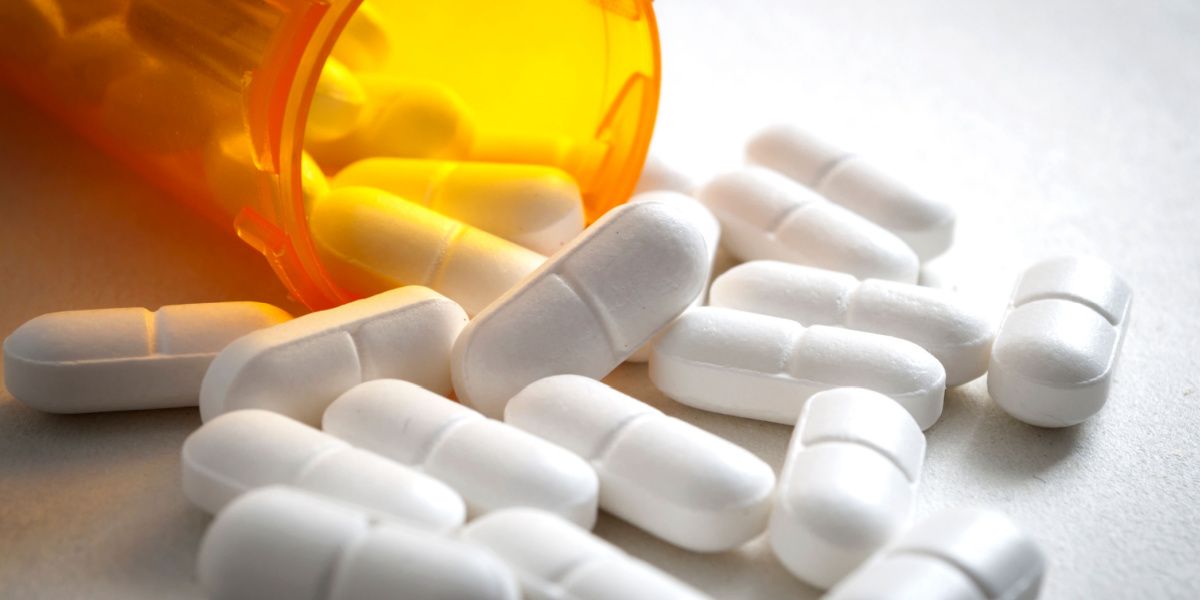Oxycodone is a powerful prescription opioid painkiller that is highly addictive in nature. People who take this medication long-term (even with a valid prescription) can become addicted to it, even when taking it as prescribed for a medical problem. The risk for addiction is higher for those who abuse the medication, taking it more often or in higher doses than prescribed, and also for those who take the medication long-term.
- Oxycodone pills come in different colors, sizes, and shapes depending on the brand and dosage and can sometimes come in the form of a liquid
- Like its opioid cousin heroin, many abuse oxycodone for its euphoric effects. And like with heroin, oxycodone abuse affects the brain's reward and pleasure system, causing people to form a dependence on the drug to feel normal
- Oxycodone withdrawal symptoms will usually start to appear within 8-12 hours of the last dose. Those who abuse the drug regularly or are addicted will often experience more severe symptoms than those who use it infrequently
.jpg?v=1756808700)
What is oxycodone?
Oxycodone is an opioid painkiller that is made by modifying thebaine, a naturally occurring chemical found in opium. Oxycodone is designated as a semi-synthetic opiate, meaning it shares a general classification with heroin, hydrocodone, and other opiate painkillers. It is a Schedule II drug under The Controlled Substance Act and is therefore considered to have a high potential for abuse despite being available with a prescription.[2][3]
Oxycodone is commonly used in prescription painkillers to treat people with moderate to severe or chronic pain. Prescriptions are often given to those suffering from cancer, physical disorders, and arthritis as well as to those who have recently had surgery or experienced physical trauma.
Oxycodone pills come in different colors, sizes, and shapes depending on the brand and dosage and can sometimes come in the form of a liquid. Oxycodone will often be prescribed as a combination drug with aspirin and ibuprofen, as well as other chemicals that have dual purposes.[2]
Related blog: Counterfeit M30: Spotting Fake Oxycodone Containing Fentanyl
Other names for oxycodone
Oxycodone has many street or slang terms, most of which are variations on the popular form of the drug, Oxycontin. Some popular street names for oxycodone or oxycontin include:
- Oxy
- OC
- O
- Ox
- Oxycotton
- Oxy 80s
- Blue
- 512s
- Kickers
- Killers
- Hillbilly Heroin
Common painkillers similar to Oxycodone
Oxycodone is a powerful opioid painkiller with similar properties as other opioid drugs, which are all designed to mimic the effects of the poppy plant, the same plant used to make heroin and opium.[2]
OxyContin
Oxycontin has a controlled release formula that provides pain relief for up to 12 hours. Those who abuse the drug will often crush the pills into a powder and snort it, or dissolve them in liquid and inject them. This process bypasses the time release of Oxycontin and produces the full hit in one dose, producing a similar reaction to heroin. OxyContin is one of the most widely abused prescription opioids.
Percocet
Percocet is often prescribed for those suffering from moderate to severe pain and is a combination drug of oxycodone and acetaminophen. As with OxyContin, those who abuse Percocet will often crush the pills and snort them for a quicker high, though some will take larger doses for a longer time to get the same effect.
Roxicodone
Roxicodone is a rapid-release form of oxycodone that is often used to treat patients before surgery or for those with moderate to severe pain for 24/7 pain management. It is most commonly abused by melting the tablets down and injecting them or smoking them.
Effects of oxycodone
As with most forms of prescription opioids, taking oxycodone in any other way than the recommended prescription is considered abuse. This includes taking larger doses or for longer than recommended, chewing pills, breaking down and snorting oxycodone pills, and injecting a solution of pills and liquid.
Like its opioid cousin heroin, many abuse oxycodone for its euphoric effects. And like with heroin, oxycodone abuse affects the brain's reward and pleasure system, causing people to form a dependence on the drug to feel normal.[1]
The short-term effects of oxycodone use include: [2][3]
- Happiness and euphoria
- Reduced pain and boosted mood
- Feelings of relaxation
- Drowsiness and sedation
- Reduced anxiety and stress
- Dizziness, confusion, loss of coordination
- Nodding off or falling asleep
When a person takes too much, they may experience any of the following effects: [2][3]
- Pinpoint pupils
- Loss of consciousness
- Confusion and becoming non-responsive
- Shallow breathing
- Loss of pallor
- Blue lips and fingers
The indications above are often signs of overdose, which requires immediate medical attention. More people die from opioid overdose each year than any other kind of drug.
As with all forms of addiction, oxycodone addiction is measured by the negative consequences the abuse of the substance has on the user's life. It’s not uncommon for people with oxycodone addictions to report negative impacts on their physical and mental health, problems in their relationships, financial problems, and work-related problems resulting from their addiction.
Oxycodone addiction
Like most forms of addiction, a person with oxycodone use disorder will be diagnosed by a licensed professional using these 11 criteria, outlined by the DSM-5: [4]
- Hazardous use: You have used the substance in ways that are dangerous to yourself and/or others, i.e., overdosed, driven while under the influence, or blacked out.
- Social or interpersonal problems related to use: Substance use has caused relationship problems or conflicts with others.
- Neglected major roles to use: You have failed to meet your responsibilities at work, school, or home because of substance use.
- Withdrawal: When you stop using the substance, you experience withdrawal symptoms.
- Tolerance: You have built up a tolerance to the substance so that you have to use more to get the same effect.
- Used larger amounts/longer: You have started to use larger amounts or use the substance for longer amounts of time.
- Repeated attempts to control use or quit: You've tried to cut back or quit entirely, but haven't been successful.
- Much time spent using: You spend a lot of your time using the substance.
- Physical or psychological problems related to use: Your substance use has led to physical health problems, such as liver damage or lung cancer, or psychological issues, such as depression or anxiety.
- Activities are given up to use: You have skipped activities or stopped doing activities you once enjoyed in order to use the substance.
- Craving: You have experienced an intense craving for the substance.
These criteria are measured by the negative impact the substance has on a person's life; including physical, psychological, and behavioral measures, and are classified as mild, moderate, and severe. The criteria are measured against the previous 12 months of substance use and a score of 2-3 is considered mild, 3-5 moderate, and 6 or more severe. Even severe oxycodone addictions can be treated and overcome.[4]
Related blog: What’s The Difference Between Oxycodone And Hydrocodone?
Oxycodone withdrawal
Extended periods of oxycodone abuse can lead to a tolerance for the drug forming in the brain. This tolerance means that those who abuse the substance will require more of it to feel the same effects, or in some cases to feel normal. This need to take the drug is what is called oxycodone dependence.
Once dependence has formed, quitting oxycodone becomes far more difficult due to withdrawal symptoms. Like other opioids, oxycodone withdrawal symptoms can be extremely uncomfortable and painful. This discomfort is what causes most people to relapse when attempting to quit.
Oxycodone withdrawal symptoms will usually start to appear within 8-12 hours of the last dose. Those who abuse the drug regularly or are addicted will often experience more severe symptoms than those who use it infrequently. For most, oxycodone withdrawal symptoms are flu-like, sharing many similarities with heroin withdrawal. The most common withdrawal symptoms include: [5][6]
- Nausea and vomiting
- Fatigue
- Depression
- Coughing
- Diarrhea
- Runny nose
- Teary eyes
- Sweating
- Anxiety
- Shaking
- Muscle aches
- Increased heart rate
- Body aches and pains
- Irritability
- Poor concentration
- Mood swings
- Inability to feel pleasure
The duration for withdrawal will be different for every user, with those who abuse regularly or in large amounts often experiencing the longest periods of withdrawal. On average symptoms will begin to manifest 8-12 hours after the last dose. They will often last anywhere from 72 hours to a week, with most symptoms dissipating after 72 hours.[5]
Related: How long do substances stay in your system?
Post-acute withdrawal symptoms (PAWS) are psychological effects that can sometimes be felt up to 24 months after someone has stopped taking oxycodone. Common PAWS include poor concentration, increased anxiety, depression, inability to feel pleasure, lack of energy, mood swing, irritability, agitation, and poor sleep.
There are many inpatient and outpatient rehab centers that are equipped to deal with oxycodone withdrawal as part of an overall recovery program. The first stage of treatment is detox, which for oxycodone is usually a medically assisted treatment with medication and round-the-clock care to deal with the more severe symptoms.[5]
Oxycodone detox
One of the main reasons people relapse when attempting to quit oxycodone is that withdrawal symptoms can be intensely painful and uncomfortable. Most opioid treatment programs (OTPs) used by inpatient and outpatient rehab centers will use medication-assisted treatment (MAT) in order to gradually wean users off the drug and avoid the worst parts of withdrawal. This often proves the most effective way to successfully enter recovery and can be a long-term treatment option for those with severe addiction.
During detox, doctors and medical professionals will often prescribe different medications in order to tackle specific aspects of withdrawal. These medications often work by tricking the brain into believing it is still receiving oxycodone without the damaging effects or high, while others block the receptors that react to opioids.[5]
Drugs typically used to treat oxycodone detox include:
Clonidine
Patients who take Clonidine report having a more tolerable withdrawal process, and therefore have improved chances of making it through withdrawal and advancing in the process of long-term recovery.
Suboxone
A combination of buprenorphine and naloxone, Suboxone provides relief from oxycodone withdrawal symptoms without the “high” of oxycodone. It is often used during detox to alleviate the discomfort of withdrawal and reduce cravings.
Naltrexone
A common drug used for detox and maintenance, Naltrexone is essentially the chemical opposite of opiates. The medicine blocks receptors in the brain that bind to oxycodone, dulling the drug’s euphoric effects. This helps reduce cravings and prolongs long-term recovery.
Treatment for Oxycodone addiction
Suffering from an oxycodone addiction can be incredibly harmful to physical and mental health as well as having an adverse effect on a person's personal life. On top of this, the harsh withdrawal symptoms can make it feel like stopping is not an option.
Stopping oxycodone abuse on your own is difficult and not advised if you have a severe addiction or dependence. It is always recommended to seek professional help from a rehab center, as a combination of medication and therapy can help make the process more comfortable, as well as decreasing the risk of relapse.[5]
If you or someone you know is suffering from oxycodone addiction, then contact a treatment center today to start the journey to recovery.




-guide-detail.jpg?v=1756808659)
-guide-detail.jpg?v=1756808574)